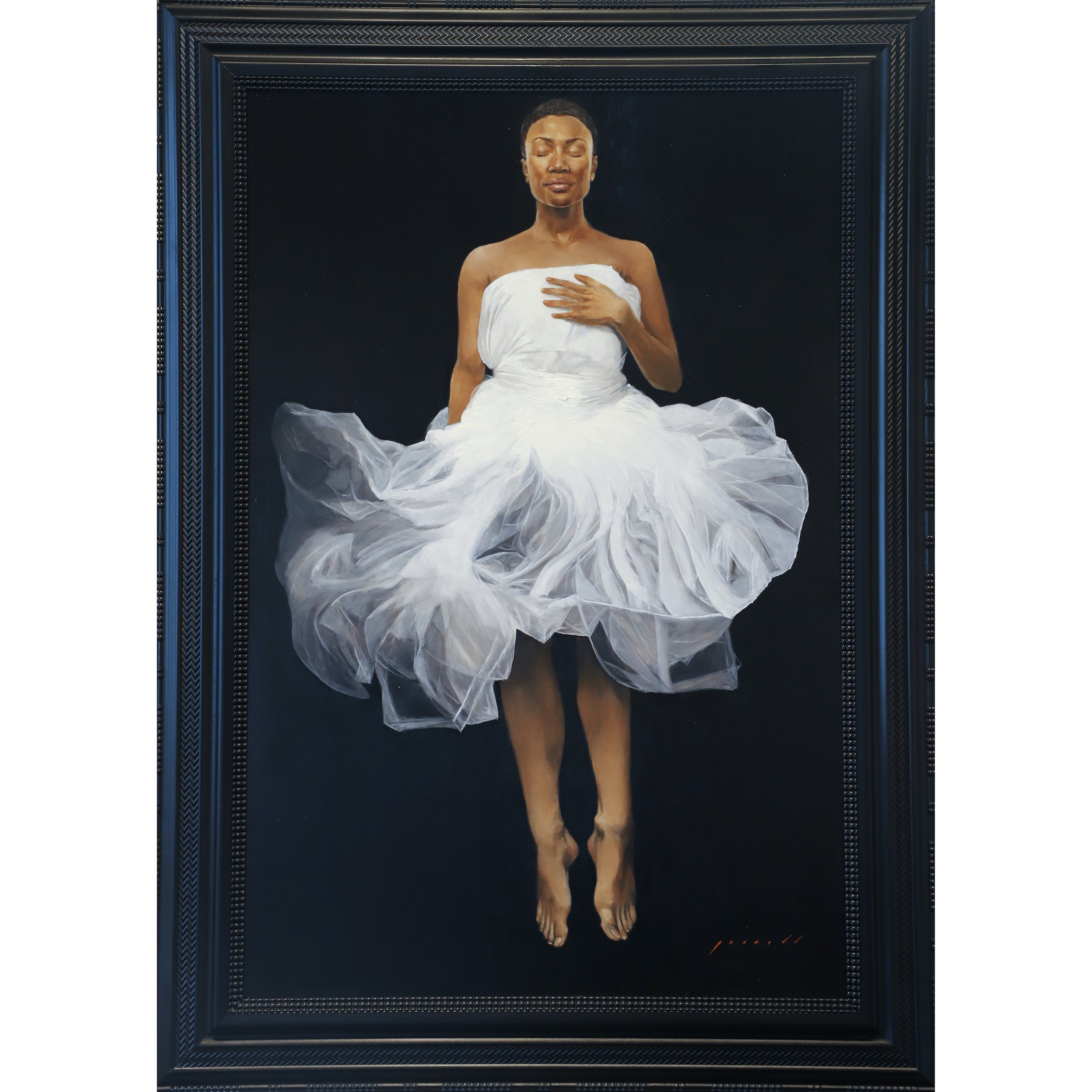This Valley of Tears
On the night of September 2nd, somber voices could be heard in the Harrison Gallery. The chants–Gregorian chants, to be exact–were performed at the request of exhibiting artist Jay Parnell. Upon entering, you would find multiple paintings of skulls, and if you were looking carefully, a small painting of a dead bird. One thing is for sure: Jay Parnell will not let you forget your mortality.
Happy Death
Oil on wood panel
11” x 14”
Alone
Oil on wood panel
5” x 7”
Jay Parnell is an acclaimed oil painter known for his naturalistic figures, who are often depicted amid mysterious circumstances. Their expressions are serious, soulful, and searching; perhaps reminiscent of a period in American art history that brought us the deadpan expressions in Grant Wood’s 1930 American Gothic. Like the people in that painting, Parnell’s subjects wear distant expressions. They seem to harbor secrets and private epiphanies.
Instant and Eternity
oil on wood panel
24” x 24”
This particular show is entitled This Valley of Tears. Here, the people Parnell depicts appear contemporary, sometimes dressed in simple hoodies and v-necked t-shirts. The world around them, however, looks as if it is falling apart. Fire rains down over the resolute expression of a young boy in Fiat Justitia Ruet Caelum as a pillar of smoke rises behind him.
Fiat Justitia Ruat Caelum
oil on wood panel
18” x 24 “
Parnell spent years working as a professional photographer before he found oil painting, and continues to source the faces of his characters from photographs. Images of people in his life, sometimes his children, find their way into his portraiture. However, unlike photography, Parnell’s work has little to do with the concept of immediacy. Every piece is a testament to time: time spent creating, time past, time present, time future, the end of time….
Sic Transit Gloria Mundi
Oil on linen
48” x 60”
The subjects in this show are often seen in nature, having strange, perhaps supernatural encounters with the world around them. The scene depicted in The Deer’s Cry is inexplicable, as a woman stands surrounded by deer, their antlers framing her on either side symmetrically while she holds a stick in her hands. The scene reads like a cryptic ceremony as the viewer contemplates what will happen next. Is this a hunting trip? What is the reason for this encounter?
The Deer’s Cry
Oil on canvas
48” x 48”
Parnell is an artist of the Catholic faith. Like many great works by Catholic artists, biblical symbolism becomes an essential element in his artistry. In Luminous Counterfeits, a young woman is surrounded by doves, many of which are clamoring at her feet. In one hand, she holds a sprig of leaves — a reference to the flood narrative from the Hebrew book of Genesis in which Noah is aboard the ark in a flooded world. He sends out a single dove hoping it will return with some sign of life. Finally, it returns with a small sprig of olive leaves. The woman in Parnell’s painting, however, wears a downtrodden expression. She stands on a sparse but grassy hilltop, a body of water behind her.
Luminous Counterfeits
Oil on wood panel
36” x 24”
There is often a saintliness to Parnell’s subjects. In a piece like Solitude the subject is turned away from the viewer. Around their locs a faint nimbus forms — a symbol used throughout art history to represent a holy person. Even with so little context, it is evident that the individual depicted is supposed to carry a certain sacredness, letting the viewer know that this person is to be associated with virtuosity.
Solitude
Oil on wood panel
11” x 14’’
This Valley of Tears is a show that reveals itself more and more as you return to it. Even the smallest of Parnell’s artistic decisions feel deliberate. Parnell does not flinch as he contemplates death, life, tragedy, and change, choosing to paint these concepts with the same quiet confidence carried by his subjects.
This Valley of Tears will be exhibited in the Harrison Gallery for the month of September.









